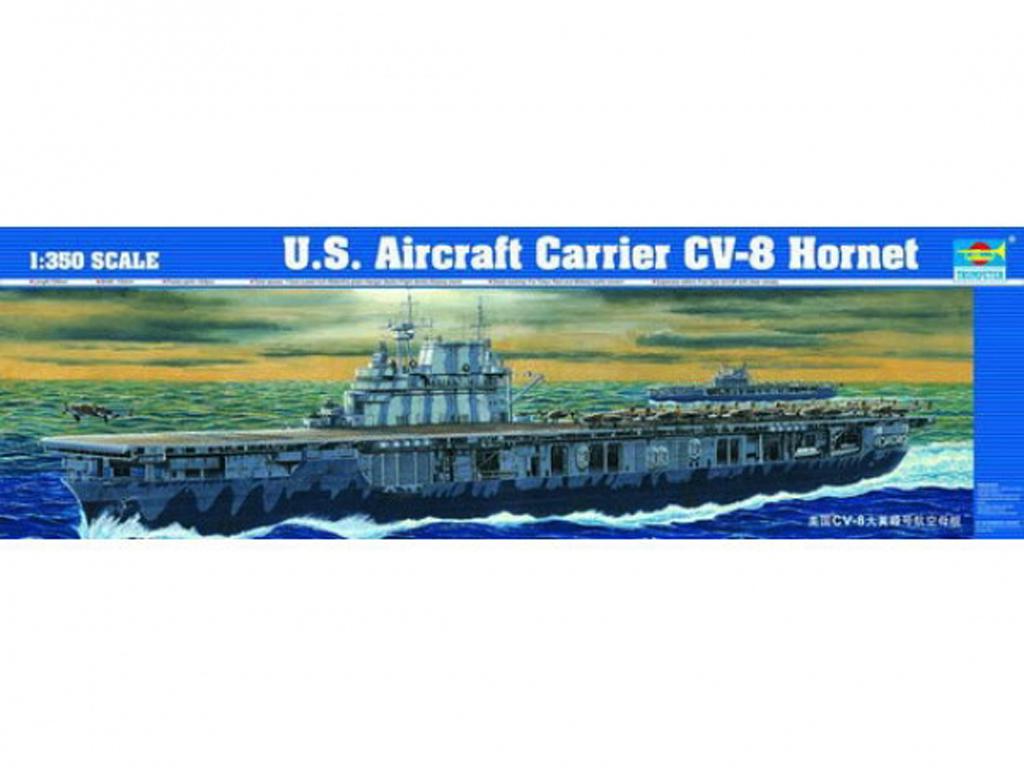
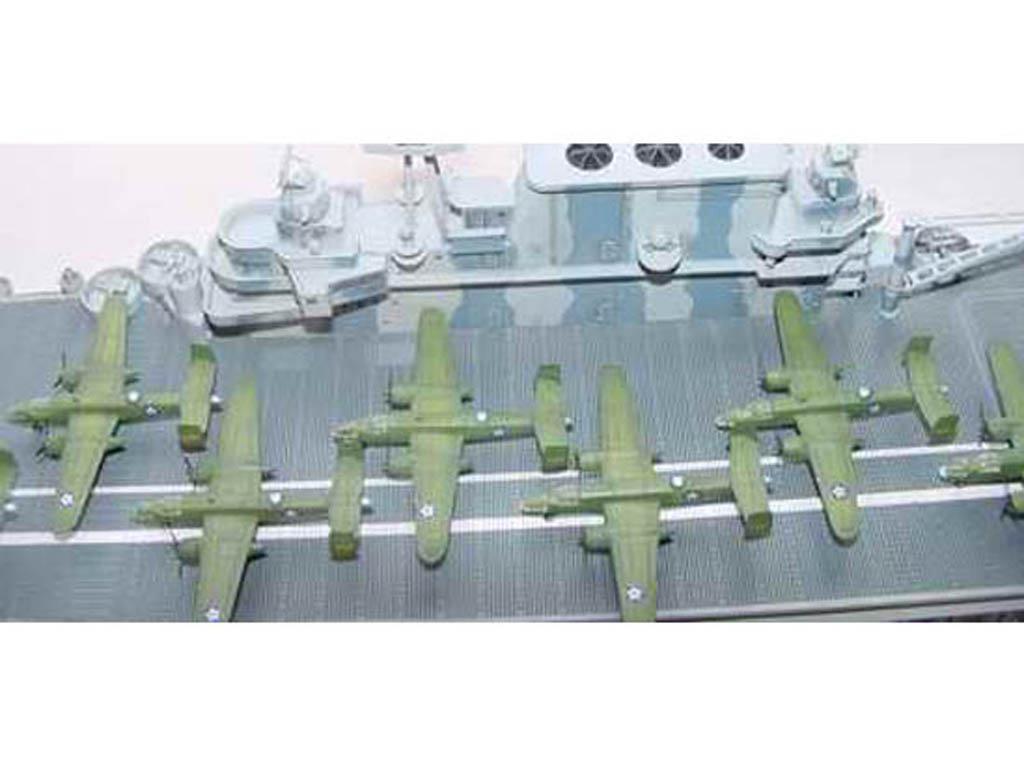
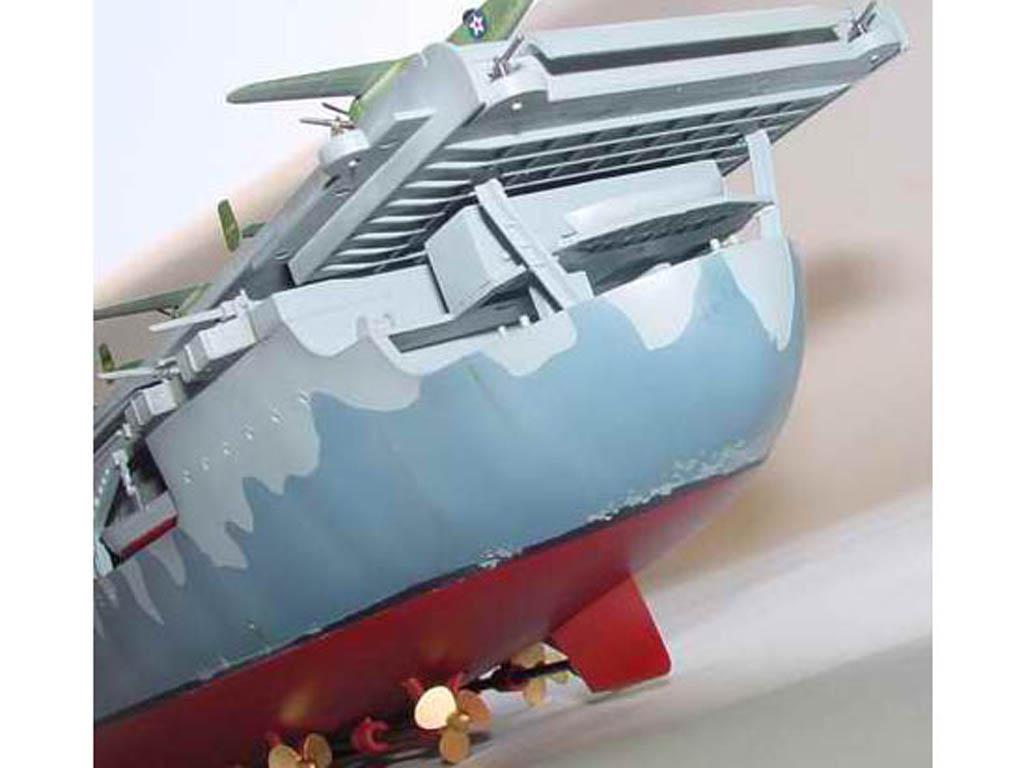
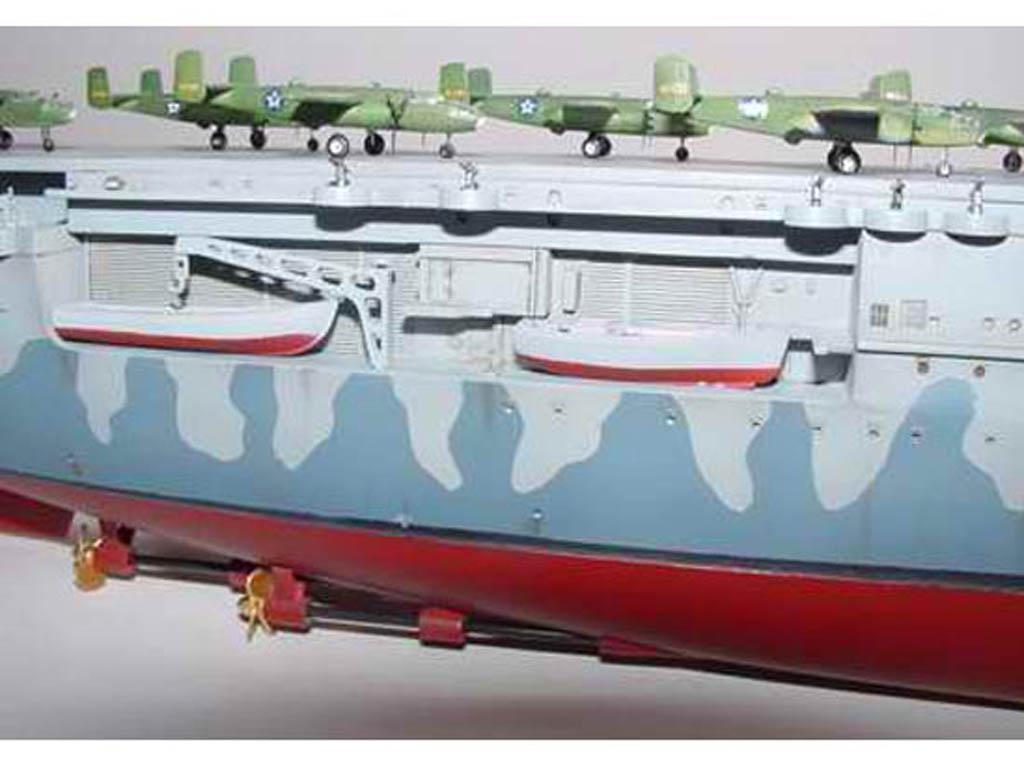
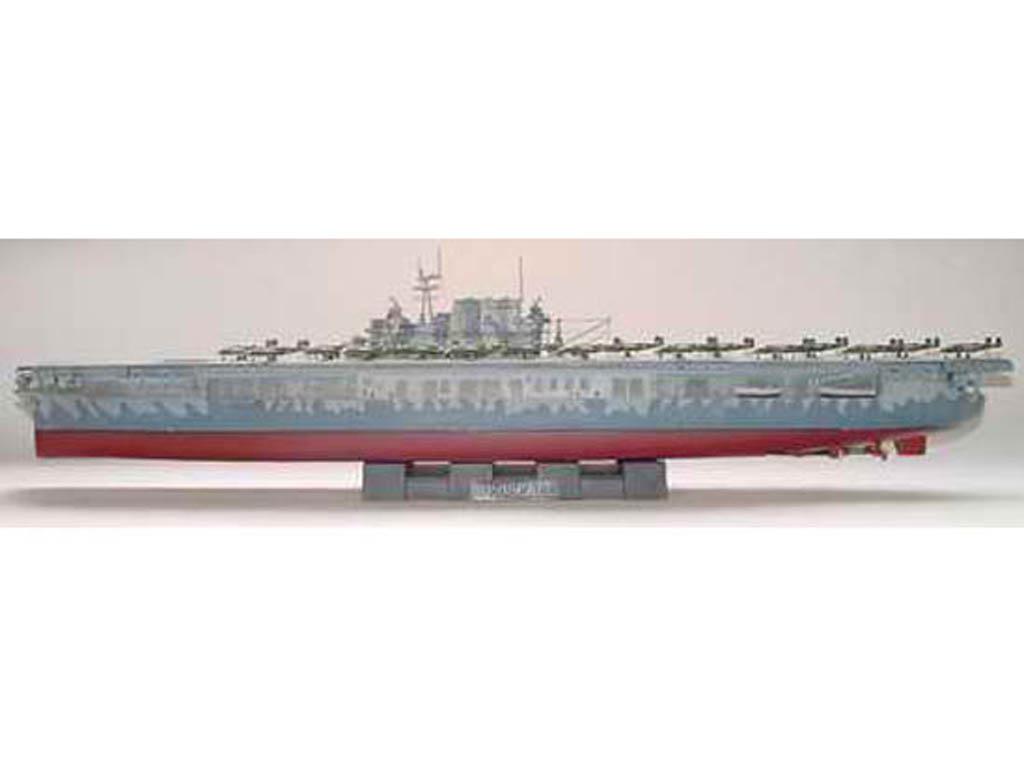
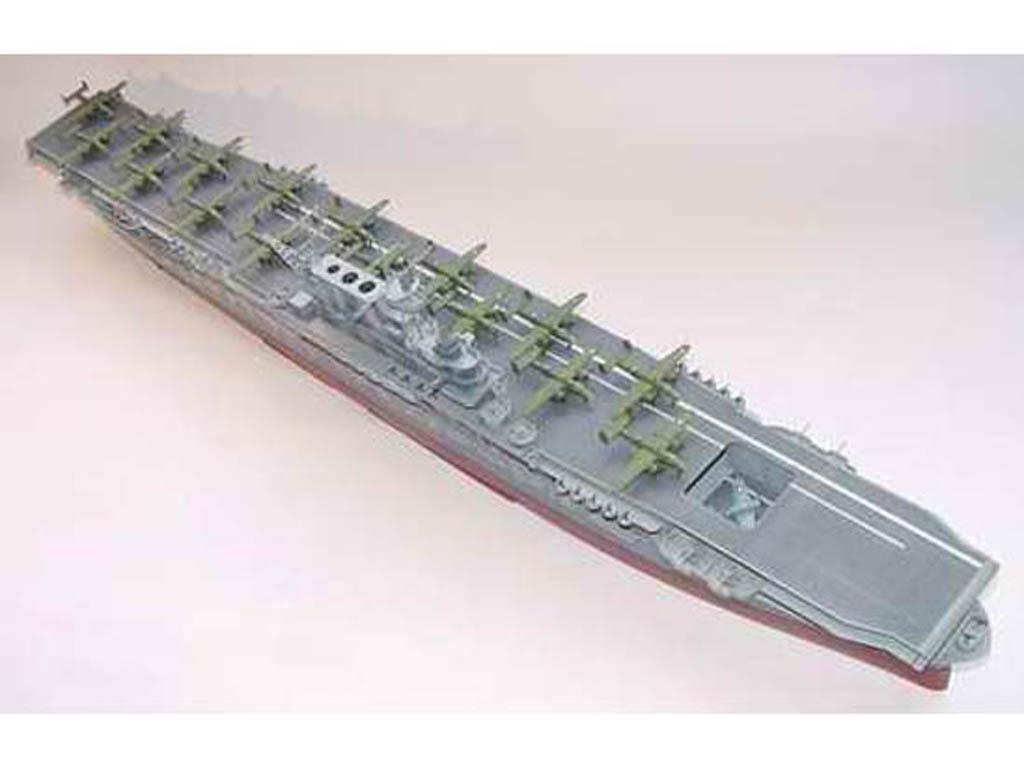
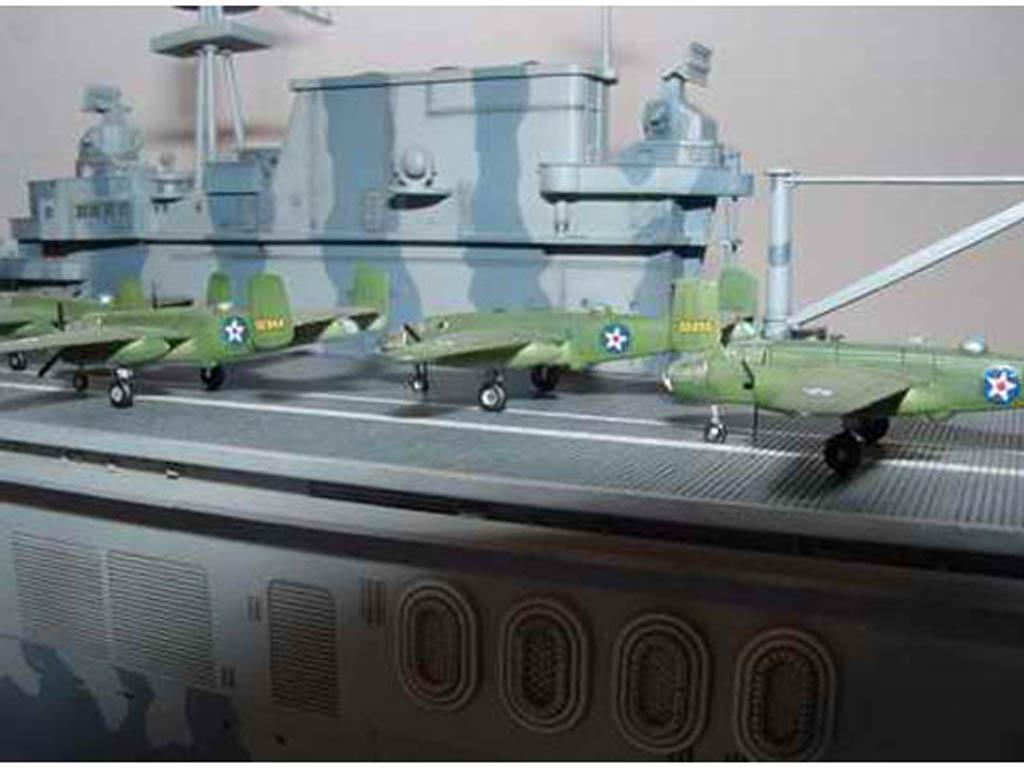
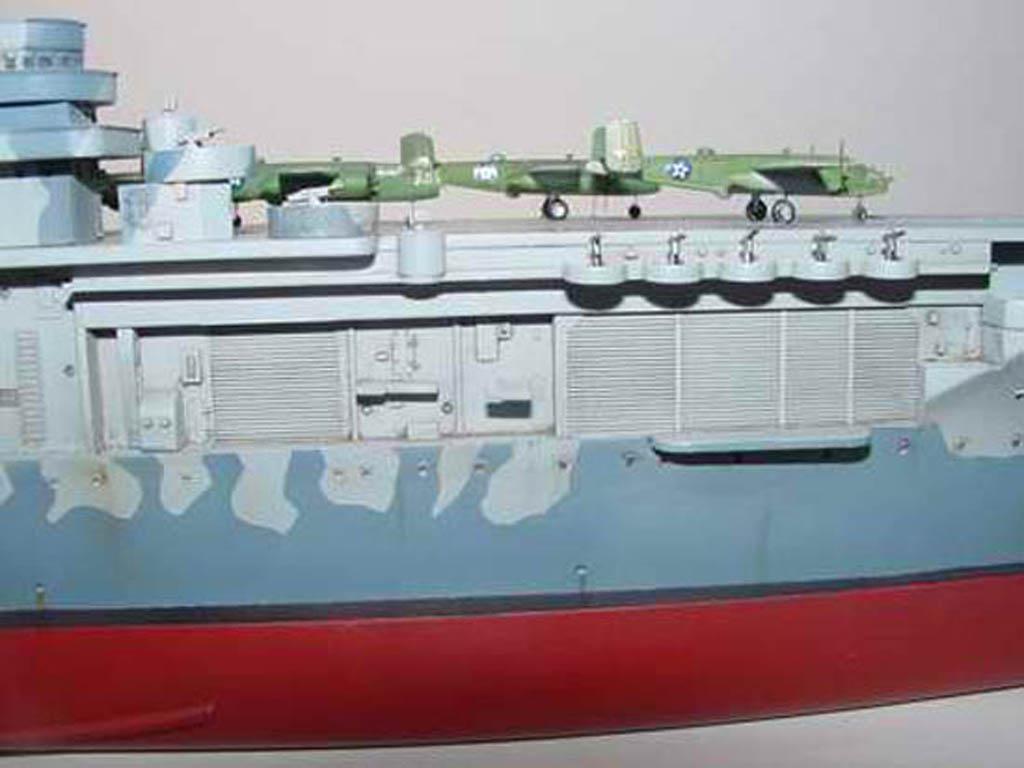
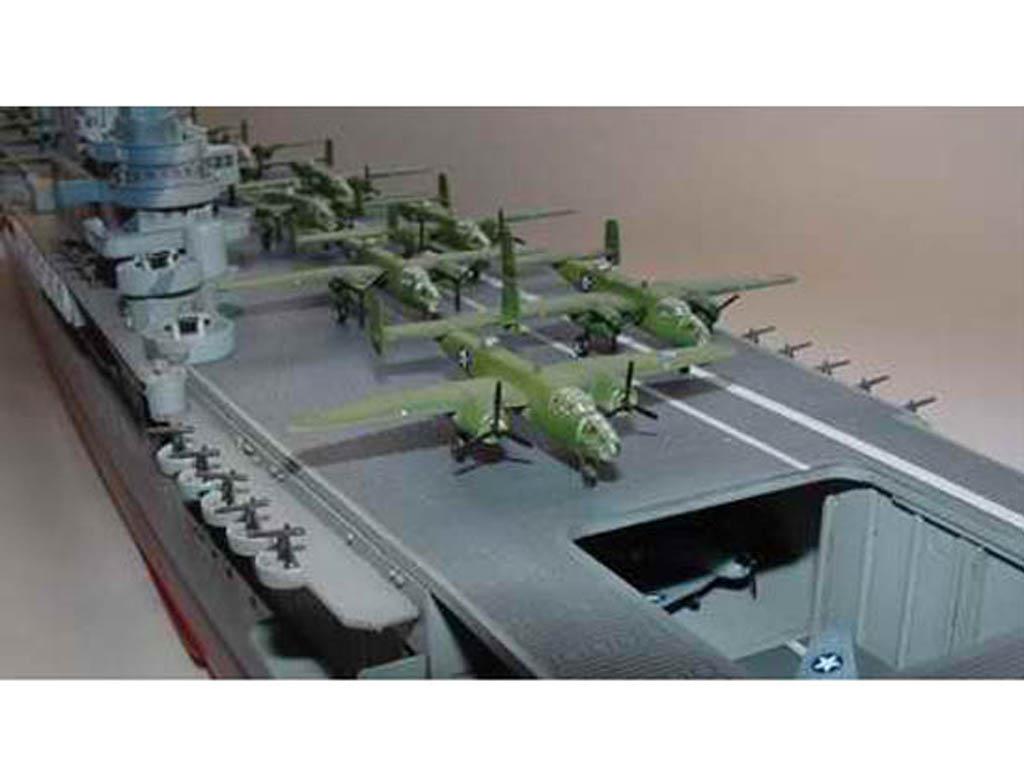
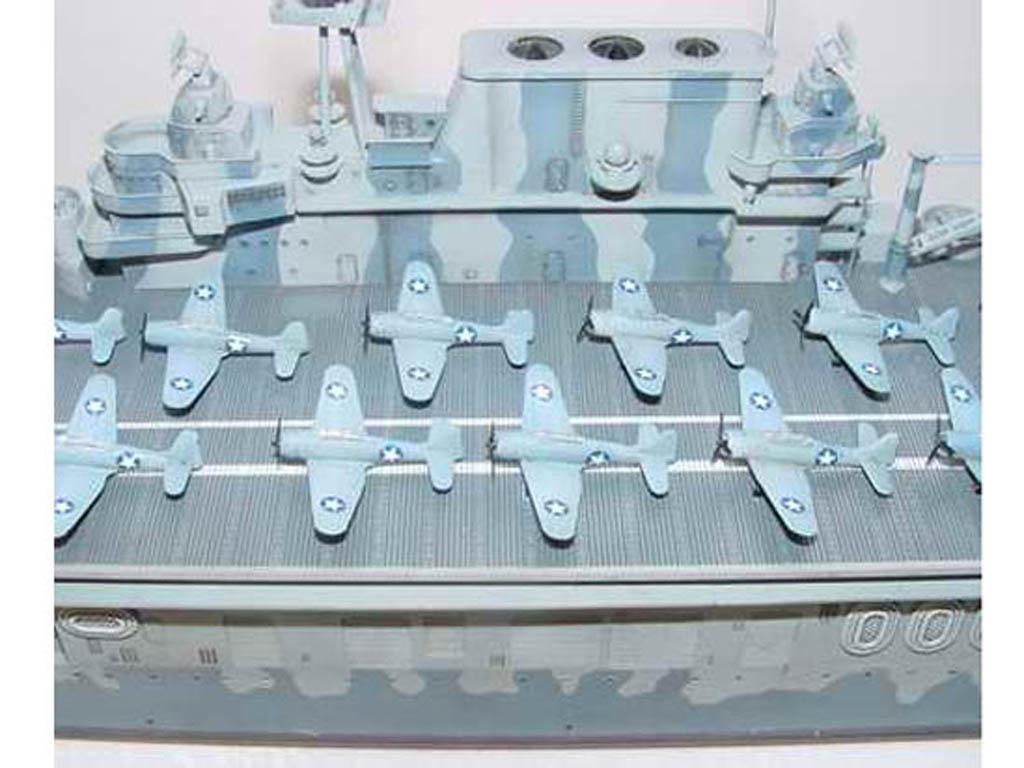
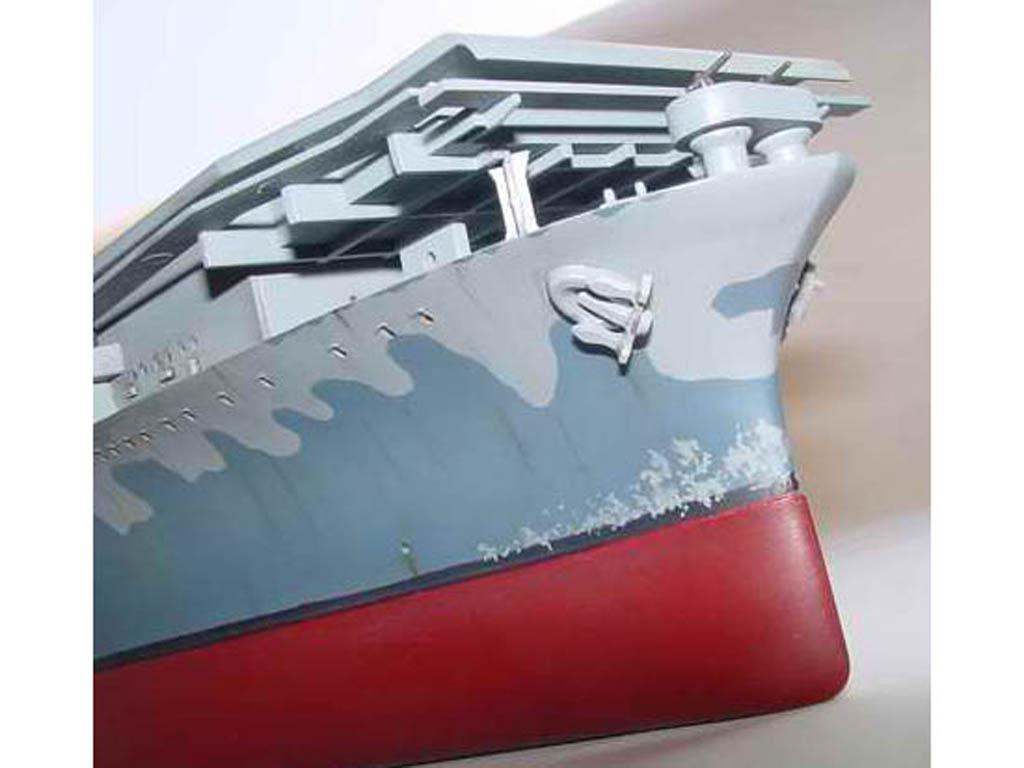











Ref.: TRUM-05601

The USS Hornet CV-8
Features
1/350 scale model of the Trumpeter house to be assembled and painted.
Length: 720 mm Width: 100 mm Total parts 433pcs
Historical Review
The 1941-1942 version USS Hornet, was a 19,800 ton Yorktown class aircraft carrier constructed at Newport News, Virginia. Commissioned in October 1941, she spent the next four months in the Atlantic preparing for battle. Transferred to the Pacific in March 1942, the Hornet was immediately deployed for the Doolittle raid. On 18 April 1942 she launched 16 U.S.Army B-25 bombers to attack Japan, a strike that caused relatively little damage but which had enormous strategic implications. The Hornet was then sent to the South Pacific to reinforce U.S.units following the Battle of Coral Sea, but was recalled to Pearl Harbor in mid-May. She then took part in the Battle of Midway, on 4-6 June 1942 during which her aircraft assisted in the sinking of the Japanese cruiser Mikuma. In August 1942, the Hornet returned to the South Pacific to join the fight for Guadalcanal. During much of September and October, she was the only operational U.S.aircraft carrier available to oppose the Japanese in that area. On 26 October 1942, during the Battle of the Santa Cruz Islands, her planes attacked and badly damaged the Japanese carrier Shokaku. In return, however, the Hornet received heavy bomb and torpedo damage, necessitating her abandonment. Though accompanying U.S.destroyers attempted to scuttle her, she remained afloat until torpedoed and sunk by Japanese ships early in the morning of 27 October.